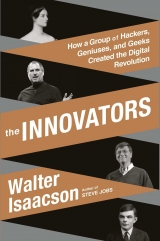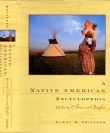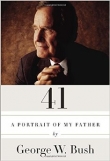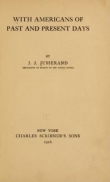
Текст книги "The Innovators: How a Group of Inventors, Hackers, Geniuses, and Geeks Created the Digital Revolution"
Автор книги: Walter Isaacson
Жанр:
Биографии и мемуары
сообщить о нарушении
Текущая страница: 25 (всего у книги 42 страниц)
Gates decided to stay at Harvard, at least for the time being. There he endured what has become a rite of passage, amusing only in retrospect, for many of its most successful students: being hauled before the university’s secretive Administrative Board for a disciplinary process, known as being “Ad Boarded.” Gates’s case arose when auditors from the Defense Department decided to check the use of the PDP-10 that it was funding in Harvard’s Aiken Lab. They discovered that one sophomore, W. H. Gates, was using most of the time. After much fretting, Gates prepared a paper defending himself and describing how he had created a version of BASIC using the PDP-10 as an emulator. He ended up being exonerated for his use of the machine, but he was “admonished” for allowing a nonstudent, Paul Allen, to log on with his password. He accepted that minor reprimand and agreed to put his early version of the BASIC interpreter (but not the refined one he and Allen were then working on) into the public domain.64
By that time Gates was focusing more on his software partnership with Allen than his course work at Harvard. He finished his sophomore year that spring of 1975, then flew down to Albuquerque for the summer and decided to stay there rather than return for the first semester of his junior year that fall. He went back to Harvard for two more semesters, in the spring and fall of 1976, but then left Harvard for good, two semesters shy of graduating. In June 2007, when he returned to Harvard to get an honorary degree, he began his speech by directing a comment to his father in the audience. “I’ve been waiting more than 30 years to say this: Dad, I always told you I’d come back and get my degree.”65
MICRO-SOFT
When Gates arrived in Albuquerque in the summer of 1975, he and Allen were still supplying BASIC for the Altair on a handshake deal with Ed Roberts. Gates insisted on a formal agreement and, after much haggling, agreed to license the software to MITS for ten years, to be bundled with each Altair, for $30 in royalty per copy. Gates was able to win two provisions that would be historically significant. He insisted that he and Allen would retain ownership of the software; MITS would merely have rights to license it. He also required that MITS use its “best efforts” to sublicense the software to other computer makers, splitting the revenues with Gates and Allen. It set a precedent for the deal Gates would make six years later with IBM. “We were able to make sure our software worked on many types of machines,” he said. “That allowed us and not the hardware makers to define the market.”66
Now they needed a name. They kicked around a few ideas, including Allen & Gates, which they decided sounded too much like a law firm. Eventually they picked one that was not particularly exciting or inspiring but did convey that they were writing software for microcomputers. In the final documents for the MITS deal, they referred to themselves as “Paul Allen and Bill Gates doing business as MicroSoft.” A credit line appeared in the source code of what was then their only product: “Micro-Soft BASIC: Paul Allen wrote the non-runtime stuff. Bill Gates wrote the runtime stuff. Monte Davidoff wrote the math package.” Within a couple of years, the name was simplified to Microsoft.
After bunking for a while at the Sundowner Motel on a strip of Route 66 known more for prostitutes than programmers, Gates and Allen moved to a cheap furnished apartment. Monte Davidoff, of floating-point math fame, and Chris Larson, a younger student from Lakeside High, moved in, turning the apartment into a frat house doing business as a geek bunker. In the evenings Allen would crank up his Stratocaster guitar and play along with Aerosmith or Jimi Hendrix, and Gates would retaliate by loudly singing Frank Sinatra’s “My Way.”67
Of them all, Gates was the prime example of the innovator’s personality. “An innovator is probably a fanatic, somebody who loves what they do, works day and night, may ignore normal things to some degree and therefore be viewed as a bit imbalanced,” he said. “Certainly in my teens and 20s, I fit that model.”68 He would work, as he had at Harvard, in bursts that could last up to thirty-six hours, and then curl up on the floor of his office and fall asleep. Said Allen, “He lived in binary states: either bursting with nervous energy on his dozen Cokes a day, or dead to the world.”
Gates was also a rebel with little respect for authority, another trait of innovators. To folks like Roberts, a former Air Force officer with five sons who called him “Sir,” Gates came across as a brat. “He literally was a spoiled kid, that’s what the problem was,” said Roberts later. But it was more complex than that. Gates worked hard and lived frugally off his then-meager earnings, but he did not believe in being deferential. The scrawny Gates would go toe to toe with the brawny six-foot-four Roberts and engage in arguments so heated that, as Allen remembered, “you could hear them yelling throughout the plant, and it was a spectacle.”
Allen assumed that his partnership with Gates would be fifty-fifty. They had always been a team, and it seemed unnecessary to fight over who had done more. But since their spat over the payroll program in high school, Gates had insisted on being in charge. “It’s not right for you to get half,” he told Allen. “You had your salary at MITS while I did almost everything on BASIC without one back in Boston. I should get more. I think it should be sixty-forty.” Whether or not Gates was right, it was in his nature to insist on such things, and it was in Allen’s nature not to. Allen was taken aback but agreed. Worse yet, Gates insisted on revising the split two years later. “I’ve done most of the work on BASIC, and I gave up a lot to leave Harvard,” he told Allen on a walk. “I deserve more than 60 percent.” His new demand was that the split be 64-36. Allen was furious. “It exposed the differences between the son of a librarian and the son of a lawyer,” he said. “I’d been taught that a deal was a deal and your word was your bond. Bill was more flexible.” But again Allen went along.69
In fairness to Gates, he was the person who, by then, was actually running the fledgling company. Not only was he writing much of the code, but he also was in charge of sales, making most of the calls himself. He would kick around ideas about product strategy with Allen for hours, but he was the one who made the final decisions on which versions of Fortran or BASIC or COBOL would be built. He was also in charge of business deals with the hardware makers, and he was an even tougher negotiator with them than he had been with Allen. Plus he was in charge of personnel, which meant hiring, firing, and telling people in words of one syllable when their work sucked, which is something Allen would never do. He had the credibility to do so; when there were contests in the office to see who could write a program using the fewest lines of code, Gates usually won.
Allen would sometimes come in late and might even think it was permissible to leave work in time for dinner. But not Gates and his close coterie. “It was hard-core,” he recalled. “A small group and me would work late into the night. And I’d sometimes stay all night and then sleep in the office and my secretary would come wake me up if we had a meeting.”70
Born with a risk-taking gene, Gates would cut loose late at night by driving at terrifying speeds up the mountain roads to an abandoned cement plant. “Sometimes I wondered why Bill drove so fast,” Allen said. “I decided it was his way of letting off steam. He’d get so wound up in our work that he needed a way to stop thinking about the business and the code for a while. His breakneck driving wasn’t so different from table stakes poker or edge-of-the-envelope waterskiing.” Once they had made a little money, Gates splurged on a green Porsche 911, which he would race along the freeway after midnight. At one point he complained to his local dealer that the car’s top speed was supposed to be 126 miles per hour, but he could get it up only to 121. Late one night he was caught speeding and got into an argument with the cop about why he wasn’t carrying a driver’s license. He was thrown into jail. “Got arrested,” he said when Allen picked up the phone. He was released in a few hours, but his mug shot from that night became a memorable icon of geek history.71
Gates’s intensity paid off. It allowed Microsoft to meet software deadlines that seemed insane, beat other competitors to the market for each new product, and charge such a low price that computer manufacturers rarely thought of writing or controlling their own software.
SOFTWARE WANTS TO BE FREE
In June 1975, the month that Gates moved to Albuquerque, Roberts decided to send the Altair on the road as if it were a carnival show exhibit. His goal was to spread the word about the Altair’s wonders and create fan clubs in towns across America. He tricked out a Dodge camper van, dubbed it the MITS Mobile, and sent it on a sixty-town tour up the coast of California then down to the Southeast, hitting such hot spots as Little Rock, Baton Rouge, Macon, Huntsville, and Knoxville.
Gates, who went along for part of the ride, thought it was a neat marketing ploy. “They bought this big blue van and they went around the country and created computer clubs everyplace they went,” he marveled.72 He was at the shows in Texas, and Allen joined them when they got to Alabama. At the Huntsville Holiday Inn, sixty people, a mix of hippyish hobbyists and crew-cut engineers, paid $10 to attend, then about four times the cost of a movie. The presentation lasted three hours. At the end of a display of a lunar landing game, doubters peered under the table suspecting that there were cables to some bigger minicomputer hidden underneath. “But once they saw it was real,” Allen recalled, “the engineers became almost giddy with enthusiasm.”73
One of the stops was at Rickeys Hyatt House hotel in Palo Alto on June 5. There a fateful encounter occurred after Microsoft BASIC was demonstrated to a group of hobbyists, including many from the recently formed Homebrew Computer Club. “The room was packed with amateurs and experimenters eager to find out about this new electronic toy,” the Homebrew’s newsletter reported.74 Some of them were also eager to act on the hacker credo that software should be free. This was not surprising given the social and cultural attitudes, so different from the entrepreneurial zeal in Albuquerque, that had flowed together in the early 1970s leading up to the formation of the Homebrew Club.
Many of the Homebrew members who met the MITS Mobile had built an Altair and been waiting impatiently to get hold of the BASIC program that Gates and Allen had produced. Some had already sent checks to MITS for it. So they were thrilled to see that the Altairs on display were running a version of it. Indulging in the imperative of hackers, one of the members, Dan Sokol, “borrowed” the punched paper tape that had the program and used a DEC PDP-11 to make copies.75 At the next Homebrew meeting, there was a cardboard box filled with dozens of BASIC tapes for members to take.III There was one stipulation: you had to make a few copies to replenish the communal box. “Remember to bring back more copies than you take,” Lee Felsenstein joked. It was his signature line for any software sharing.76 Thus did Microsoft BASIC spread freely.
This, not surprisingly, infuriated Gates. He wrote a passionate open letter, displaying all the tact of a nineteen-year-old, which served as the opening shot in the war over the protection of intellectual property in the age of personal computers:
An Open Letter to Hobbyists . . .
Almost a year ago, Paul Allen and myself, expecting the hobby market to expand, hired Monte Davidoff and developed Altair BASIC. Though the initial work took only two months, the three of us have spent most of the last year documenting, improving and adding features to BASIC. Now we have 4K, 8K, EXTENDED, ROM and DISK BASIC. The value of the computer time we have used exceeds $40,000.
The feedback we have gotten from the hundreds of people who say they are using BASIC has all been positive. Two surprising things are apparent, however, 1) Most of these “users” never bought BASIC (less than 10% of all Altair owners have bought BASIC), and 2) The amount of royalties we have received from sales to hobbyists makes the time spent on Altair BASIC worth less than $2 an hour.
Why is this? As the majority of hobbyists must be aware, most of you steal your software. Hardware must be paid for, but software is something to share. Who cares if the people who worked on it get paid?
Is this fair? One thing you don’t do by stealing software is get back at MITS for some problem you may have had. . . . One thing you do do is prevent good software from being written. Who can afford to do professional work for nothing? What hobbyist can put 3-man years into programming, finding all bugs, documenting his product and distribute for free? The fact is, no one besides us has invested a lot of money in hobby software. We have written 6800 BASIC, and are writing 8080 APL and 6800 APL, but there is very little incentive to make this software available to hobbyists. Most directly, the thing you do is theft. . . .
I would appreciate letters from anyone who wants to pay up, or has a suggestion or comment. Just write to me at 1180 Alvarado SE, #114, Albuquerque, New Mexico, 87108. Nothing would please me more than being able to hire ten programmers and deluge the hobby market with good software.
Bill Gates
General Partner, Micro-Soft
The letter was printed in the Homebrew Computer Club newsletter and also the Altair user group’s Computer Notes and the People’s Computer Company.77 It stirred up a frenzy. “I got a lot of shit,” Gates admitted. Of the three hundred letters he received, only five had a voluntary payment. Most of the rest heaped abuse on him.78
Basically, Gates was correct. The creation of software was just as valuable as the creation of hardware. Those who made software deserved to be compensated. If they weren’t, people would quit writing software. By resisting the hacker ethos that anything that could be copied should be free, Gates helped ensure the growth of the new industry.
Still, there was a certain audacity to the letter. Gates was, after all, a serial stealer of computer time, and he had manipulated passwords to hack into accounts from eighth grade through his sophomore year at Harvard. Indeed, when he claimed in his letter that he and Allen had used more than $40,000 worth of computer time to make BASIC, he omitted the fact that he had never actually paid for that time and that much of it was on Harvard’s military-supplied computer, funded by American taxpayers. The editor of one hobbyist newsletter wrote, “Rumors have been circulating through the hobby computer community that imply that development of the BASIC referred to in Bill Gates’s letter was done on a Harvard University computer provided at least in part with government funds and that there was some question as to the propriety if not the legality of selling the results.”79
Also, though Gates did not appreciate it at the time, the widespread pirating of Microsoft BASIC helped his fledgling company in the long run. By spreading so fast, Microsoft BASIC became a standard, and other computer makers had to license it. When National Semiconductor came out with a new microprocessor, for example, it needed a BASIC and decided to license Microsoft’s because everyone was using it. “We made Microsoft the standard,” said Felsenstein, “and he called us thieves for doing so.”80
At the end of 1978 Gates and Allen moved their company from Albuquerque back home to the Seattle area. Just before they left, one of the twelve staffers won a free photo shoot from a local studio, so they posed for what would become a historic photograph, with Allen and most of the others looking like refugees from a hippie commune and Gates sitting up front looking like a Cub Scout. On his drive up the California coast, Gates was slapped with three speeding tickets, two from the same policeman.81
APPLE
Among those in Gordon French’s garage at the first meeting of the Homebrew Computer Club was a socially awkward young hardware engineer named Steve Wozniak, who had dropped out of college and was working at Hewlett-Packard’s calculator division in the Silicon Valley town of Cupertino. A friend had shown him the flyer—“Are you building your own computer?”—and he worked up the courage to attend. “That night turned out to be one of the most important nights of my life,” he declared.82
Wozniak’s father was a Lockheed engineer who loved explaining electronics. “One of my first memories is his taking me to his workplace on a weekend and showing me a few electronic parts, putting them on a table with me so I got to play with them,” Wozniak recalled. There were usually stray transistors and resistors lying around the house, and when Steve would ask, “What’s that?” his father would start from the beginning and explain how electrons and protons worked. “He pulled out a blackboard from time to time, and he would answer anything and make diagrams for it,” Wozniak said. “He taught me how to make an and gate and an or gate out of parts he got—parts called diodes and resistors. And he showed me how they needed a transistor in between to amplify the signal and connect the output of one gate to the input of the other. To this very moment, that is the way every single digital device on the planet works at its most basic level.” It was a striking example of the imprint a parent can make, especially back in the days when parents knew how radios worked and could show their kids how to test the vacuum tubes and replace the one that had burned out.
Wozniak made a crystal radio using scraped pennies when he was in second grade, a multihouse intercom system for the kids in his neighborhood when he was in fifth grade, a Hallicrafters shortwave radio when he was in sixth grade (he and his dad earned ham licenses together), and later that year taught himself how to apply Boolean algebra to electronic circuit design and demonstrate it with a machine that never lost at tic-tac-toe.
By the time he was in high school, Wozniak was applying his electronic wizardry to pranks. In one case he built a metronome attached to stripped batteries that looked like a bomb. When his principal discovered it ticking in a locker, he rushed it onto the playground away from the kids and called the bomb squad. Wozniak had to spend one night in the local house of detention, where he taught his fellow inmates to remove the wires on the ceiling fan and touch them to the iron bars in order to shock the jailer when he came to open the door. Although he had learned to code well, he was at heart a hardware engineer, unlike more refined software jockeys such as Gates. At one point he built a roulette-like game where players put their fingers in slots and when the ball landed one of them got shocked. “Hardware guys will play this game, but software guys are always way too chicken,” he said.
Like others, he combined a love of technology with a hippie outlook, although he could not quite pull off the counterculture lifestyle. “I would wear this little Indian headband, and I wore my hair really long and grew a beard,” he recalled. “From the neck up, I looked like Jesus Christ. But from the neck down, I still wore the clothes of a regular kid, a kid engineer. Pants. Collared shirt. I never did have the weird hippie clothes.”
For fun, he would study the manuals of the office computers made by Hewlett-Packard and DEC and then try to redesign them using fewer chips. “I have no idea why this became the pastime of my life,” he admitted. “I did it all alone in my room with my door shut. It was like a private hobby.” It was not an activity that made him the life of the party, so he became pretty much a loner, but that talent to save chips served him well when he decided to build a computer of his own. He did so using only twenty chips, compared to the hundreds in most real computers. A friend who lived down the block joined him for the soldering, and because they drank so much Cragmont cream soda, it was dubbed the Cream Soda Computer. There was no screen or keyboard; instructions were fed in by punch card, and answers were conveyed by flashing lights on the front.
The friend introduced Wozniak to a kid who lived a few blocks away and shared their interest in electronics. Steve Jobs was almost five years younger and still at Homestead High, which Wozniak had attended. They sat on the sidewalk swapping tales about pranks they had pulled, Bob Dylan songs they liked, and electronic designs they had made. “Typically, it was really hard for me to explain to people the kind of design stuff I worked on, but Steve got it right away,” Wozniak said. “I liked him. He was kind of skinny and wiry and full of energy.” Jobs was similarly impressed. “Woz was the first person I’d met who knew more electronics than I did,” he later said, stretching his own expertise.
Their greatest escapade, which laid the foundation for the computer partnership they would form, involved what was known as a Blue Box. In the fall of 1971, Wozniak read an article in Esquire describing how “phone phreaks” had created a device that emitted just the right tone chirps to fool the Bell System and cadge free long-distance calls. Before he even finished reading the article, he called Jobs, who was just beginning his senior year at Homestead High, and read parts of it aloud to him. It was a Sunday, but they knew how to sneak into a library at Stanford that might have the Bell System Technical Journal, which the Esquire article said included all the frequencies for the signal tones. After rummaging through the stacks, Wozniak finally found the journal. “I was practically shaking, with goose bumps and everything,” he recalled. “It was such a Eureka moment.” They drove to Sunnyvale Electronics to buy the parts they needed, soldered them together, and tested it with a frequency counter that Jobs had made as a school project. But it was an analog device, and they couldn’t get it to produce tones that were precise and consistent enough.
Wozniak realized he would need to build a digital version, using a circuit with transistors. That fall was one of his infrequent semesters of dropping into college, and he was spending it at Berkeley. With help from a music student in his dorm, he had one built by Thanksgiving. “I have never designed a circuit I was prouder of,” he said. “I still think it was incredible.” They tested it by calling the Vatican, with Wozniak pretending to be Henry Kissinger needing to speak to the pope; it took a while, but the officials at the Vatican finally realized it was a prank before they woke up the pontiff.
Wozniak had devised an ingenious gadget, but by partnering with Jobs he was able to do much more: create a commercial enterprise. “Hey, let’s sell these,” Jobs suggested one day. It was a pattern that would lead to one of the most storied partnerships of the digital age, up there with Allen & Gates and Noyce & Moore. Wozniak would come up with some clever feat of engineering, and Jobs would find a way to polish and package it and sell it at a premium. “I got together the rest of the components, like the casing and power supply and keypads, and figured out how we could price it,” Jobs said of the Blue Box. Using $40 worth of parts for each Blue Box, they produced a hundred that they sold for $150 apiece. The escapade ended after they got ripped off at gunpoint trying to sell one in a pizza parlor, but from the seeds of the adventure a company would be born. “If it hadn’t been for the Blue Boxes, there wouldn’t have been an Apple,” Jobs later reflected. “Woz and I learned how to work together.” Wozniak agreed: “It gave us a taste of what we could do with my engineering skills and his vision.”
Jobs spent the following year dropping in and out of Reed College and then seeking spiritual enlightenment on a pilgrimage to India. When he returned in the fall of 1974, he went to work at Atari under Nolan Bushnell and Al Alcorn. Atari, flush with its success with Pong, was on a hiring spree. “Have fun; make money,” declared one of the ads it took out in the San Jose Mercury. Jobs showed up dressed in his hippie garb and said he wouldn’t leave the lobby until he was hired. At Alcorn’s urging, Bushnell decided to take a chance on him. Thus the torch was passed from the most creative entrepreneur of video games to the man who would become the most creative entrepreneur of personal computers.
Despite his newly acquired Zen sensibilities, Jobs was inclined to inform his coworkers that they were “dumb shits” whose ideas sucked. Yet somehow he also managed to be compelling and inspiring. He sometimes wore a saffron robe, went barefoot, and believed that his strict diet of only fruits and vegetables meant that he need not use deodorant or shower often. As Bushnell recounted, “this was a mistaken theory.” So he put Jobs on the night shift, when almost no one else was around. “Steve was prickly, but I kind of liked him. So I asked him to go on the night shift. It was a way to save him.”
Jobs would later say that he learned some important lessons at Atari, the most profound being the need to keep interfaces friendly and intuitive. Instructions should be insanely simple: “Insert quarter, avoid Klingons.” Devices should not need manuals. “That simplicity rubbed off on him and made him a very focused product person,” said Ron Wayne, who worked with Jobs at Atari. In addition, Bushnell was able to help mold Jobs into an entrepreneur. “There is something indefinable in an entrepreneur, and I saw that in Steve,” Bushnell recalled. “He was interested not just in engineering, but also the business aspects. I taught him that if you act like you can do something, then it will work. I told him, pretend to be completely in control and people will assume that you are.”
Wozniak liked to come by Atari most evenings, after he finished work at Hewlett-Packard, to hang with Jobs and play the auto racing video game, Gran Trak 10, that Atari had finally developed. “My favorite game ever,” he called it. In his spare time, he pieced together a home version of Pong that he could play on his TV set. He was able to program it to blast the word Hell or Damn whenever a player missed hitting the ball. One night he showed it to Alcorn, who came up with a scheme. He assigned Jobs to engineer a one-player version of Pong, to be called Breakout, in which a user could volley the ball against a brick wall, dislocating bricks to win points. Alcorn guessed, correctly, that Jobs would convince Wozniak to do the circuit design. Jobs was not a great engineer, but he was good at getting people to do things. “I looked at it as a two-for-one thing,” Bushnell explained. “Woz was a better engineer.” He was also a lovable and naïve teddy bear of a guy, who was as eager to help Jobs make a video game as Tom Sawyer’s friends were to whitewash his fence. “This was the most wonderful offer in my life, to actually design a game that people would use,” he recalled.
As Woz stayed up all night churning out elements of the design, Jobs sat on a bench to his left wire-wrapping the chips. Woz thought the task would take weeks, but in an early example of Jobs exerting what colleagues called his reality distortion field, he was able to stare unblinkingly at Woz and convince him he could do the job in four days.








